#alexandre gustave eiffel
Text
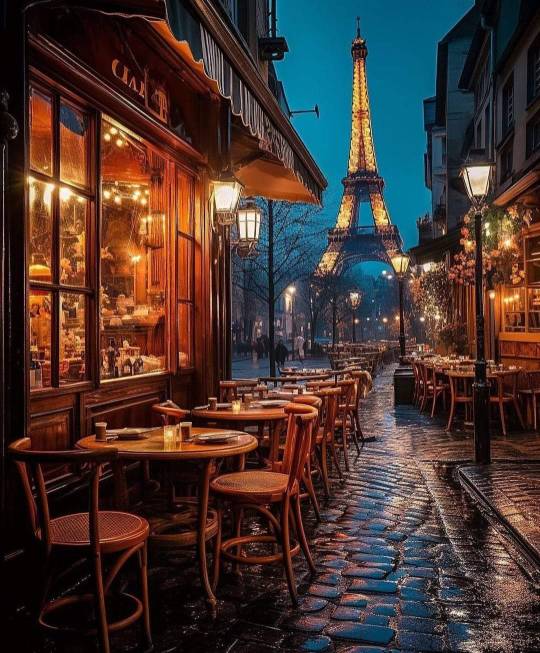
P A R I S
#paris#alexandre gustave eiffel#gustave eiffel#tour eiffel#eiffel tower#torre eiffel#la nuit#by night#por la noche#france#francia#europe#europa
4K notes
·
View notes
Text
Ronda de enlaces (22/04/2024)
Vuelve a ser lunes y, por tanto, tenemos otra ronda de enlaces. En primer lugar, esta semana puse algún enlace interesante en Tumblr:
Continue reading Ronda de enlaces (22/04/2024)

View On WordPress
#Adriano (emperador romano)#Alexander Solzhenitsyn#Alexandre Gustave Eiffel#Antigüedad#Antiguo Egipto#Archipiélago Gulag#Arquitectura#Arte griego#Auguste Meyer#Batalla Naval de Episcopia (1323)#Catástrofes#Copenhague#Edad Media#Egipto antiguo#Escultura#España#Extremadura#Fotografía#Imperio Romano#Numismática#Pintura#Praxíteles#Puentes#Siglo XIX#Templarios#Uniformes militares
0 notes
Photo

Building Mr. Eiffel’s penthouse in the Eiffel Tower. That’s him making his way up, during the construction.

Showing the depth of the Eiffel Tower’s foundations. Construction began in 1887, designed by Alexandre Gustave Eiffel (1832-1923) the tower was finished in time for the 1889 Paris Exhibition.

Despite the 18,038 pieces of wrought iron, 2.5 million rivets used to build the 10,000 ton and 984.25 feet high man-made structure, only 300 workers were employed to build it (some reports even estimate it was only 200 workers).

Notice not a single hard hat. The tower was built as a symbol of modern science and engineering, and luckily, photography was in its infancy, or we wouldn’t have any documentation.

When the tower first opened, the elevators weren’t operational yet and the 30,000 visitors of the World’s Fair had to climb 1,710 steps to reach the top.
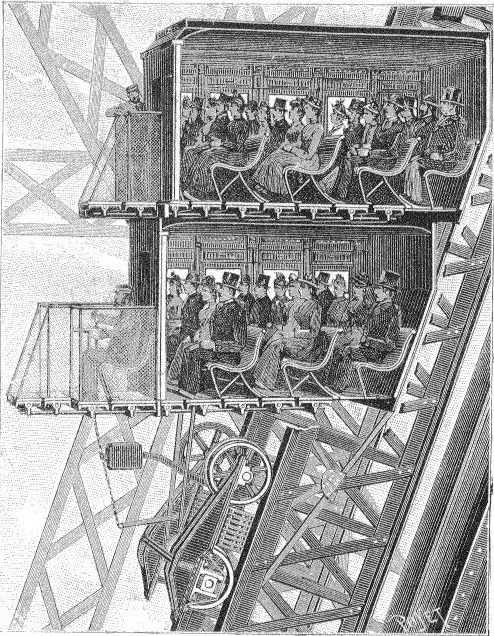
Cross section view of Otis Elevator on the Eiffel Tower, May 4, 1889,

The Eiffel Tower wasn’t just a hollow tower with a great view. French newspaper Le Figaro opened a print office on the 2nd floor. There was also a post office for sending postcards.

Plus, a scientific lab. Gustave Eiffel in the experimental chamber of his aerodynamic laboratory,

And allegedly even a theater! As for the elusive theater, the photo dates to 1900, so it’s possible that it was temporarily erected for the Paris Exhibition, in what is today’s reception room on the 1st floor.


Gustave Eiffel was “the object of general envy.”

Looking inside his plush lookout “penthouse” at 290 meters (951′) above ground.

In Mr. Eiffel’s private apartment on the 4th floor, he entertained the likes of Thomas Edison. (I think this is a reenactment.)
http://www.roomonethousand.com/eiffels-apartment-and-the-architecture-of-dreams // messynessychic.com
269 notes
·
View notes
Text
26/10/2023 16:20

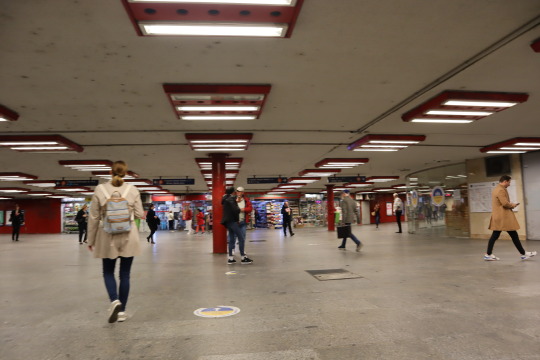


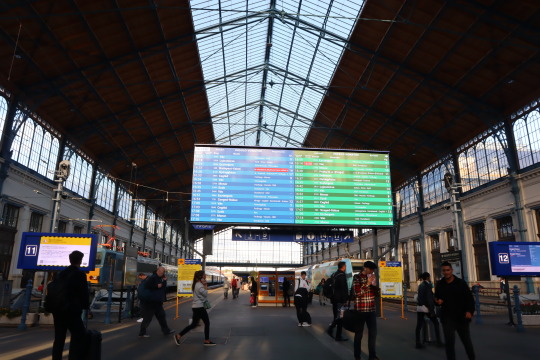
Nyugati pályaudvar(ブダペスト西駅)
やっと目的の駅に到着👣

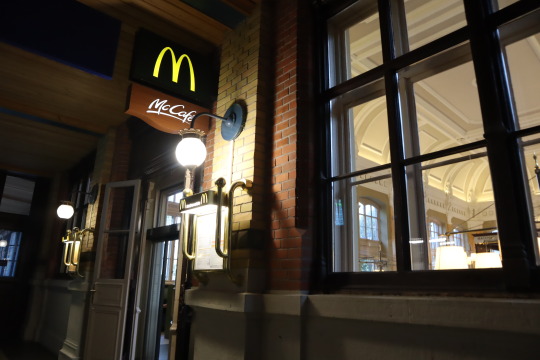
マックの入り口が見つけきれず、散々駅の周りをうろうろして発見!場所を聞くにも英語が分かる人がいない(泣)
中欧って英語も通じるんじゃなかったんですか⁉️


"The Most Beautiful McDonald's in the World(世界で最も美しいマクドナルド)"と世界に言わしめたマックですよ✨
実はこのマクドナルドが入っている建物は、パリのエッフェル塔を設計したギュスターヴ・エッフェル(Alexandre Gustave Eiffel)によって設計されたそうです。
ここのマックカフェのケーキもお手頃価格で美味しいと情報は仕入れていたので、当初はここでコーヒーとケーキを買って休憩する予定でした…☕
が、前半に時間をかけてしまったことに加えて途中で迷子になったので残された時間はありません。急いで何枚か室内の写真を撮ったらマックを後にします😭
しかも上の階のマックカフェはケーキは美味しいという話でしたし、下の階のマックはマックフライポテトも日本のとは違ってブラックペッパーも使われていて、病みつきになる美味しさなんだって…😭
こんな時に限って何で時間がないのさっ😭
#備忘録#photography#reminder#Hungary#Budapest#The Most Beautiful McDonald's in the World#Nyugati pályaudvar#世界一美しいマクドナルド#時間がない…
43 notes
·
View notes
Photo
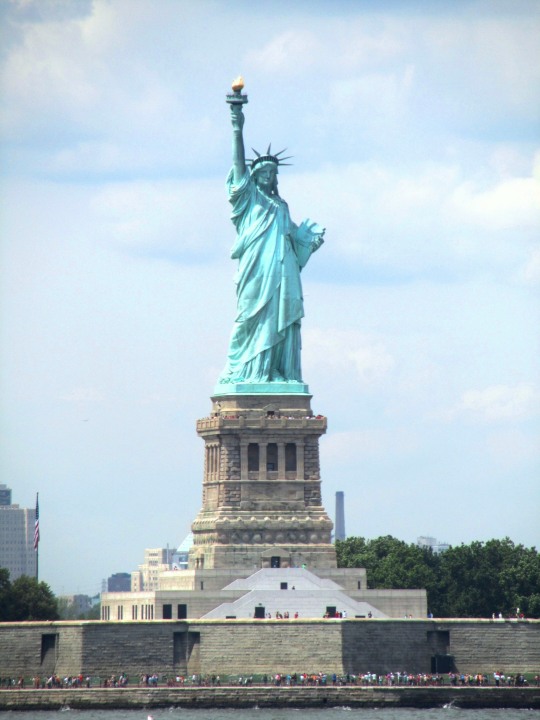
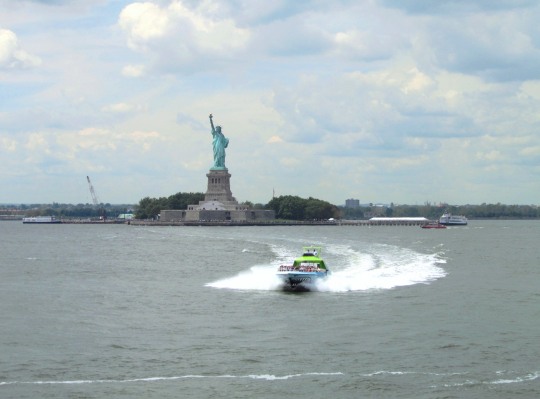
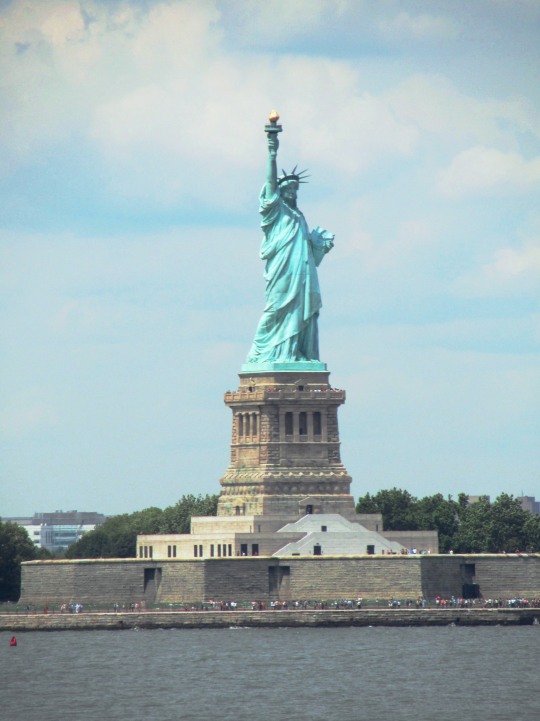
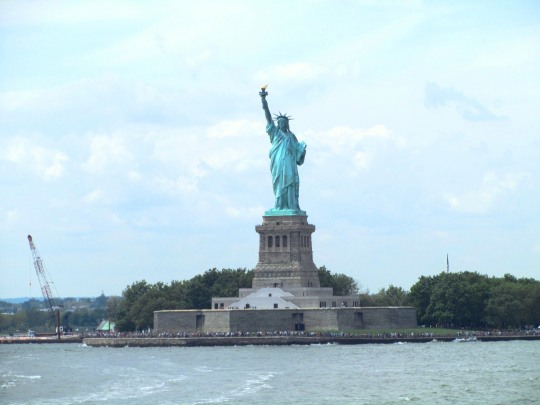
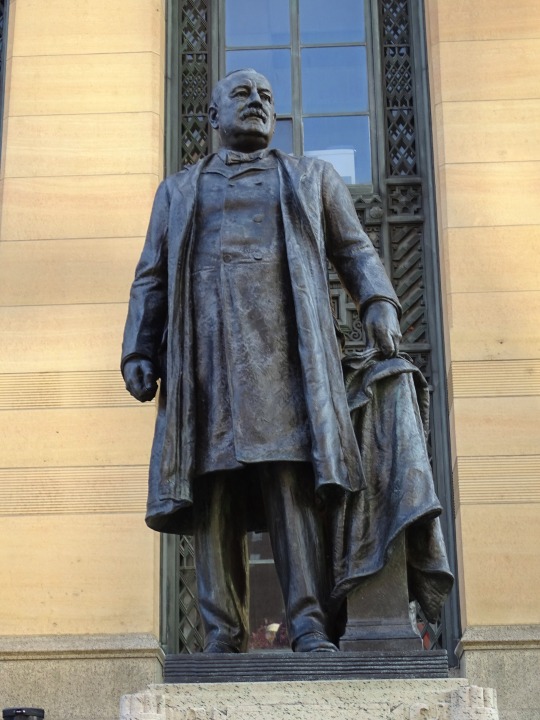
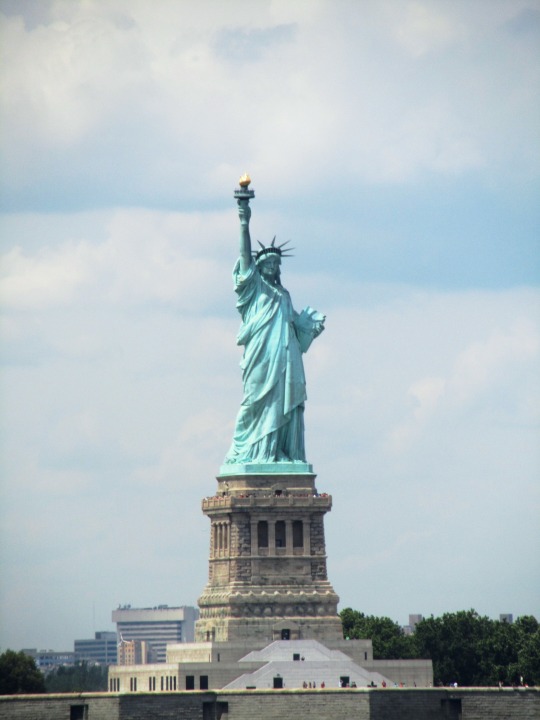


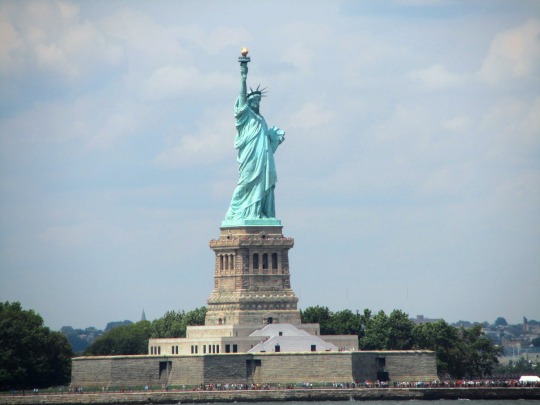

In New York Harbor, President Grover Cleveland dedicated the Statue of Liberty on October 28, 1886.
Statue of Liberty Dedication Day
Statue of Liberty Dedication Day celebrates the Statue of Liberty, and commemorates the day on which it was dedicated in 1886. The idea for the statue was proposed by French historian Edouard de Laboulaye in 1865. France decided to build and give the statue to the United States to commemorate the centennial of the signing of the Declaration of Independence, the alliance between the two countries during the Revolutionary War, and the friendship that continued afterwards. An agreement was made that the statue would be paid for by the people of France, and the pedestal on which it would stand would be paid for by Americans. The project was delayed because of lack of funds from both countries, especially the United States, but the money was eventually raised. French artist Frederic-Auguste Bartholdi designed the statue, and its support system was engineered by Eugene-Emmanuel Viollet-le-Duc and Alexandre-Gustave Eiffel—who shortly afterwards became famous for his work on the Eiffel Tower.
In June 1885 the statue arrived in New York City in 214 packing crates, and was reconstructed on Bedloe’s Island—which was renamed Liberty Island in 1956. On October 28, 1886, the Statue of Liberty was dedicated. A red barge transported to the island those who wanted to see the event. President Grover Cleveland officiated, and a speech was given by Ferdinand de Lesseps, who was a French diplomat, and head of the Franco-American Union, a group that had been created in 1875 to facilitate the completion of the project. There was music and a gun salvo, and Bartholdi, the mastermind of the statue, was perched in the statue’s torch, and pulled a rope that removed the French flag from in front of Lady Liberty’s face, revealing it to the crowd. That evening the torch was lit for the first time.
The statue stands 151 feet tall, and is made of a copper sheeting covering an iron framework. Its pedestal is 154 feet in height, and is made of granite. Besides holding a torch, Lady Liberty—who was based off of Libertas, the Greek god of freedom—holds a tablet in which the date July 4, 1776, is inscribed. The statue became an important symbol for immigrants, especially after nearby Ellis Island began processing them in 1892. It was the first thing that they saw while entering New York Harbor, and many wrote home to their relatives in their home countries about it. Emma Lazarus’ poem, “The New Colossus”, was eventually added to the pedestal, further cementing the relationship between immigrants and the statue. It became a U.S. National Monument in 1924, and the National Park Service now oversees the whole island. Today the statue stands as a universal symbol of freedom and liberty.
How to Observe
The best way to celebrate the day, is to visit the Statue of Liberty, or plan a trip to do so. A boat can be taken to Liberty Island, and the pedestal and crown of the statue can be explored.
Source
#President Grover Cleveland by Bryant Baker#President Grover Cleveland#USA#dedicated#Statue of Liberty#28 October 1886#anniversary#US history#Gustave Eiffel#Frédéric Auguste Bartholdi#sculpture#Buffalo City Hall#Buffalo#New York City#New York#summer 2013#2018#original photography#architecture#New York Harbor#tourist attraction#landmark
21 notes
·
View notes
Text
ELLA FUÉ LA MODELO PARA LA ESTATUA DE LA LIBERTAD
Federico Auguste Bartholdi escogió esta hermosa mujer de nombre Isabelle Eugènie Boyer, nacida en Francia en 1841.
Ella estuvo casada con el industrialista Isaac Marrit Singer de la compañia de màquinas de coser que lleva su nombre. En 1878 esta duquesa atrajo la atenciòn del escultor, quien la inmortalizò. Muriò en 1904.
Se encuentra en la isla de la Libertad al sur de la isla de Manhattan, junto a la desembocadura del río Hudson y cerca de la isla Ellis.
La Estatua de la Libertad fue un regalo del pueblo francés al pueblo estadounidense en 1886 para conmemorar el centenario de la Declaración de Independencia de los Estados Unidos y como un signo de amistad entre las dos naciones.
Fue inaugurada el 28 de octubre de 1886 en presencia del presidente estadounidense de la época, Grover Cleveland.
La estatua es obra del escultor francés Frédéric Auguste Bartholdi y la estructura interna fue diseñada por el ingeniero Alexandre Gustave Eiffel
Extraido de la página Cultura General

3 notes
·
View notes
Text

Happy Birthday, Alexandre-Gustave Eiffel (1832-1923)
3 notes
·
View notes
Text
instagram
Joyeux 10 ans à nous ! 🥳
Retour express sur la célébration tout en AVOLONTÉ et en buffet à l’honneur de nos 6 créations qui s’est déroulée le 20 février au Cellier de Reims. Encore et encore merci à Alexandre Benetas @bjr.studio et le Lycée Gustave Eiffel, ainsi que le Cellier de Reims et la Ville de Reims. Mais bien-sûr aussi à Lucas, Lou et Alexis ainsi toute l’équipe enlacée depuis toutes ces années et plus particulièrement au casting d’AVOLONTÉ qui a ouvert les festivités.
0 notes
Text
Experimentik #70 / January 17. 2024 / Lucio Capece / Claudia Risch + Francis Heery + Jung-Jae Kim

January 17. 2024 / 20:30- (doors 20:00)
Solo:
Lucio Capece - 8 voices Sampler Isla 2400, recorded cello and bass clarinet, sine-sawtooth tones and pulses
---------
Trio:
Claudia Risch - bass clarinet
Francis Heery - electronics
Jung-Jae Kim - saxophone
FB event: https://fb.me/e/3Ywj3sQuL
----------------
Lucio Capece
Argentinian musician based in Europe since 2002, specifically in Berlin since 2004. Since 2010 he dedicates to offer works focused in the Perception experience, that he performs mainly in solo and in the context of occasional collaborations based in the same interest. He composes his own pieces that may include improvisation and different ways of writing. He uses tools like Flying Speakers hanging from Helium Balloons moved by propellers, Speakers as Pendulums, Analog synthesiser, Sine Waves and Noise Generators, Drum Machines, Ultra- Violet Lights, Sensors as much as the instruments that he has played for 25 years: Bass Clarinet and Soprano and Slide Saxophone. Beyond instrumentation and tools, the main intention is to focus in the physical-social-spatial human experience. Between the late 90 ́s and 2010 he offered music in the context of Electro Acoustic Improvisation, focused in quietness, attentive listening and granular material. Capece has been very active in the Reductionist Improvised Music scene in Berlin, and in the radical minimal scene related with the collective Wandelweiser collaborating mainly as member of the collective Konzert Minimal (2008- 2018) and, since 2006 with Radu Malfatti. In a parallel way Capece developed a 10 years collaboration with legendary Finnish musician Mika Vainio from Pan Sonic, working and releasing radical abstract and beats oriented music as a duo and two different quartets. Capece has performed his own sound interventions in spaces like Kraftwerk Berlin ( The Long Now - Maerz Musik), Hau Berlin (CTM festival), The Cathedral of Bern (Zoom In Festival) The Mambo Museum in Bologna (Live Arts week ),the German Pavilion built by Mies Van der Rohe in Barcelona (Sonar +D Festival), the Halle d ‘Expositions built by Alexandre Gustave Eiffel in Evreux, France (ĹÁtelie series) the Bauhaus Archive in Berlin (directing a piece in which together with musicians Axel Dörner and Robin Hayward played a piece with the kinetic sculpture called “Licht-Raum Modulator” built by Lászlò Moholy-Nagy) , and the Colón Theatre in Buenos Aires where he offered an interactive installation for children. Since 2020 he plays mainly in the context of small Ensembles where he composes the music, or collaborates with others performers-composers like Rahma Quartet, From Scratch New Discantus Quintet, Lost Jockey and Phase to Phase. His goal in this context is to re consider Music making in a Phenomenological way, re- searching in the basic elements that make Music be. He offers currently a Sampler solo set based in a personal research in Just Intonation Ratios, folding and unfolding sounds from Pitch to Pulse and vice versa. He has performed as a musician in recognised experimental music festivals and venues in Europe, USA, Japan, Mexico and Argentina. He has released around 35 Cds and Lps, including 9 solo releases, in labels like Mego Editions, B-Boim (Austria), Pan (Germany), Ftarri (Japan) Another Timbre, Entr ́acte ( UK), Potlatch, (France), Erstwhile Intonema (Russia), etc.
photo © Susi Maresca

----------------
Claudia Risch has developed special playing techniques on the Bassclarinet, which is acoustic of it´s nature and works without additive external resorces. She focusses on the extended sound-material of her instruments like micro-intervals, multi-phonics, sound of breath. Within this variety of elaborated technical possibilities Risch combines, applies and modifies her material to create a refined, nuanced and multilayerd sound. The co-operation with composers (e.g. Thomas Gerwin, Francis Heery), electronics and dancers is an important component in her work.
https://www.instagram.com/claudiarisch07/
photo © Matthias Förster

---------------
Francis Heery (b.1980) is a composer and sound artist. His music is inspired by science-fiction, occultism and animal aesthetics. He is an accomplished improvisor and performs with a setup integrating Max/MSP with acoustic instruments and modular synths. He specializes in long-form, site-specific performances in public spaces. His instrumental works have been performed by the RTE Symphony Orchestra, the Crash Ensemble, the Quiet Music Ensemble, the Talujon Percussion Ensemble and by soloists including Carin Levine, Pascal Galois and Izumi Kimura. He has received funding awards from the Arts Council of Ireland as well as commissions from Galway County and City Councils, the Music Current Festival, the Berlin Natural History Museum, and the Berlin International Sound Art Festival. He produces experimental electronica under the name The Cube of Unknowing, with albums released on Fort Evil Fruit and Eiderdown Records.

----------------
Jung-Jae Kim is a South Korean saxophonist, composer, and improviser based in Berlin free/avant-garde & experimental music scene. He pushes the boundaries of sonic aesthetics and sound definitions, taking a transdisciplinary approach to explore new possibilities and delve into human senses and communication through free improvisation.
photo © Morvarid K

------------------
Experimentik 2024 is supported by inm

0 notes
Text
Eiffel Kulesi'nin Tarihi
Eiffel Kulesi, Paris'in sembolü haline gelmiş olan ünlü bir yapıdır. Kule, Fransız mühendis Gustave Eiffel tarafından inşa edilmiştir. İnşaatına 1887 yılında başlanan kule, 1889 yılında tamamlanmıştır. Bu nedenle Eiffel Kulesi'nin tarihi, 19. yüzyılın sonlarına dayanmaktadır.
İlk olarak 1889 yılında düzenlenen Paris Dünya Fuarı için inşa edilen kule, o dönemde birçok eleştiriye maruz kalmıştır. Ancak zamanla, Eiffel Kulesi dünyanın en popüler turistik destinasyonlarından biri haline gelmiştir. Tarihi boyunca birçok ziyaretçiyi ağırlamış ve dünya çapında tanınmış bir simge haline gelmiştir.
Eiffel Kulesi'nin inşa süreci, o dönemdeki mühendislik ve mimarlık tekniklerinin nasıl kullanıldığını göstermesi açısından önemlidir. Aynı zamanda Eiffel Kulesi'nin tarihi, Paris'in tarihindeki önemli bir dönemi temsil etmektedir. Kule, Fransız Devrimi'nin ardından ülkenin sanayileşme ve modernleşme sürecini simgelemektedir.
Bugün Eiffel Kulesi, Paris'in en bilinen yapılarından biridir ve her yıl milyonlarca turist tarafından ziyaret edilmektedir. Bu nedenle, kule sadece bir mimari yapıdan çok daha fazlasını temsil etmektedir. Eiffel Kulesi'nin tarihi, bu özel yapıyı anlamak ve takdir etmek için oldukça önemlidir.
Eiffel Kulesi'nin İnşa SüreciEiffel Kulesi'nin inşa süreci, 1887 ve 1889 yılları arasında gerçekleşmiştir. Kule, Paris'in sembolü haline gelmiş olup Gustave Eiffel tarafından tasarlanmıştır. Eiffel, Antoine-Alexandre Barbier ile Maurice Koechlin'in tasarımını geliştirmiştir. Yapım sürecinde kullanılan malzemeler arasında 18.038 parça demir ve 2.5 milyon perçin bulunmaktadır.İnşaat süreci toplamda 2 yıl 2 ay 5 gün sürmüştür. 300 mühendis ve işçi, 4 milyon 360 bin Frank harcayarak bu devasa projeyi gerçekleştirmiştir. Eiffel Kulesi'nin yapımı için özel olarak tasarlanmış 18.038 parçalık bir demir iskelet kullanılmıştır.Inşaatın halka açık olmayan ilk yılında kule inşa edilirken, tasarım eleştirilere maruz kalmıştır. Kule tamamlandığında ise üçüncü yüzyılın en büyük mühendislik harikalarından biri olmuştur. Zamanla, kule Fransız mimarisinin ve mühendisliğinin en büyük simgelerinden biri haline gelmiştir.Eiffel Kulesi'nin inşa süreci, mühendislik yeteneklerinin ve sanatın müthiş bir birleşimi olarak modern dünya mirasında önemli bir yere sahiptir.Eiffel Kulesi'nin Mimari ÖzellikleriFransa'nın başkenti Paris'in sembol yapılarından biri olan Eiffel Kulesi, mimari açıdan oldukça dikkat çekici özelliklere sahiptir. Kule, demir bir iskelet üzerine inşa edilmiş olup, 300 metre yüksekliğiyle uzun bir süre dünyanın en yüksek yapısı unvanını elinde tutmuştur.Eiffel Kulesi'nin mimari özelliği, döneminin mühendislik ve inşaat teknolojilerine göre oldukça ileri bir yapıda olmasıdır. Kule, Gustave Eiffel'in liderliğindeki bir ekip tarafından tasarlanmış ve inşa edilmiştir. Aynı zamanda döneminin en büyük yapılarından biri olan kule, dikkat çekici bir estetiğe sahiptir.Kulede kullanılan demir malzeme ve iskelet yapısı, mimari açıdan modernizmin ve endüstriyel devrimin etkilerini yansıtmaktadır. Ayrıca kule, çelik damakalarla birbirine bağlanmış özel bir demir sistemiyle desteklenmiş olup, bu da mimari açıdan oldukça önemli bir özelliktir.Eiffel Kulesi'nin mimari özellikleri, dünya mimarlık tarihindeki dönüm noktalarından birini temsil etmektedir. Kule, tasarımı, yapımı ve estetiği ile birçok mimar ve mühendis için ilham kaynağı olmuş ve dünya çapında büyük bir etki yaratmıştır.Eiffel Kulesi'nin Turistik ÖnemiEiffel Kulesi, Paris'in sembolü haline gelmiş ve dünyanın en popüler turistik destinasyonlarından biri olarak hala ziyaretçilerini etkilemeye devam ediyor. Paris'in kalbinde yer alan bu muhteşem yapı, yılda milyonlarca turisti ağırlıyor ve şehrin turizm gelirlerine büyük katkı sağlıyor.Her yıl yüz binlerce insan Eiffel Kulesi'ni ziyaret etmek için Paris'e akın ediyor. Kule, hem gündüz hem de gece muhteşem bir görüntü sunarak turistlerin ilgisini çekiyor. Ayrıca, kuleye çıkarak şehrin panoramik manzarasını izlemek de turistler için unutulmaz bir deneyim oluyor.
Paris'in en ünlü simgesi olan Eiffel Kulesi, şehirdeki diğer turistik noktalarla birlikte ziyaret edildiğinde turistlere unutulmaz bir seyahat deneyimi sunuyor. Ayrıca, kule etrafında bulunan restoranlar, hediyelik eşya dükkanları ve çevresindeki parklar da turistler için cazip bir turistik merkez konumunda.Özetle, Eiffel Kulesi'nin turistik önemi, Paris'i ziyaret eden turistler için vazgeçilmez bir durak olmasından kaynaklanmaktadır. Şehrin sembolü haline gelmiş bu muhteşem yapının turizm açısından büyük bir değere sahip olduğu tartışmasızdır.Eiffel Kulesi'nin Görülecek Noktaları
Eiffel Kulesi'nin Görülecek Noktaları arasında ilk sırada tabii ki kuleye çıkılarak Paris'in muhteşem manzarasının izlenmesi geliyor. Kuleye çıkıldığında şehrin simgeleri olan Notre Dame Katedrali, Louvre Müzesi, Champs-Elysees Caddesi ve Seine Nehri'nin eşsiz manzarası görülebiliyor.
Bunun yanı sıra Eiffel Kulesi'nin Görülecek Noktaları arasında kule etrafındaki parkta dolaşmak da bulunuyor. Kule çevresinde yer alan Champ de Mars Parkı ve Trocadero Bahçeleri, dinlenmek ve piknik yapmak isteyen ziyaretçiler için ideal noktalar olarak öne çıkıyor.
Eiffel Kulesi'nin hemen yanında yer alan Cinéaqua, küçük misafirler ve deniz yaşamı tutkunları için harika bir ziyaret noktası. Akvaryum, çeşitli deniz canlılarıyla yapılan interaktif etkinlikler ve su altı tüneli ile ziyaretçilere unutulmaz deneyimler sunuyor.
Son olarak, Eiffel Kulesi'nin Görülecek Noktaları arasında yer alan eski bir Fransız demiryolu istasyonu olan Musée d'Orsay, sanatseverler için kule ziyaretini tamamlayacak bir nokta olabilir. Müzede izlenmeye değer birçok eser bulunuyor ve kule ziyaretinden sonra sanatın tadını çıkarmak isteyen ziyaretçiler için ideal bir opsiyon olarak öne çıkıyor.
Eiffel Kulesi'nin Etkileyici ManzarasıEiffel Kulesi, Paris'in sembolü olarak kabul edilen ve her yıl milyonlarca turisti kendisine çeken bir yapıdır. Kule, başta Şanzelize Caddesi olmak üzere birçok noktadan etkileyici bir şekilde görülebilmektedir.Eiffel Kulesi'nin tam ortasından geçen Seine Nehri, kuleden bakıldığında muhteşem bir manzara oluşturur. Özellikle gün batımı ve akşam saatlerinde nehir üzerinde yansıyan ışıklar, ziyaretçilere unutulmaz bir deneyim yaşatır.Bunun yanı sıra, kuleye çıktığınızda şehrin tümünü kuşbakışı görebilme imkanı da bulunmaktadır. Paris'in tarihi yapıları, geniş bulvarları ve yeşil parkları, Eiffel Kulesi'nin tepesinden izlendiğinde oldukça etkileyici bir manzara oluşturur. Ayrıca, kulede bulunan restoran ve teraslar sayesinde ziyaretçiler, bu muhteşem manzara eşliğinde lezzetli bir yemek yiyebilme imkanına da sahiptir.Eiffel Kulesi'nin etkileyici manzarası, fotoğraf tutkunlarının da ilgisini çeker. Kule çevresinde bulunan parklarda ve nehir kenarında çekilen fotoğraflar, Paris'in simgesi olan kuleyi en iyi şekilde yansıtabilme özelliğine sahiptir.
0 notes
Text
Γουστάβος Άιφελ – Ο άνθρωπος του Πύργου που «πήρε το σχήμα του από τον ίδιο τον άνεμο»
Ο Γουστάβος Άιφελ (Alexandre Gustave Eiffel, πραγματικό επώνυμο: Bönickhausen, 15 Δεκεμβρίου 1832 – 27 Δεκεμβρίου 1923), ήταν Γάλλος μηχανικός, αρχιτέκτονας και μασόνος. Γεννήθηκε στη Ντιζόν και έγινε γνωστός χτίζοντας γέφυρες και φυσικά τον Πύργο σήμα-κατατεθέν του Παρισιού. Ο Άιφελ ήταν διάσημος από τα μεγαλοφυή του σχέδια και την άριστη τεχνογνωσία του στις σιδηροκατασκευές. Φωτογραφία από:…
View On WordPress
0 notes
Text
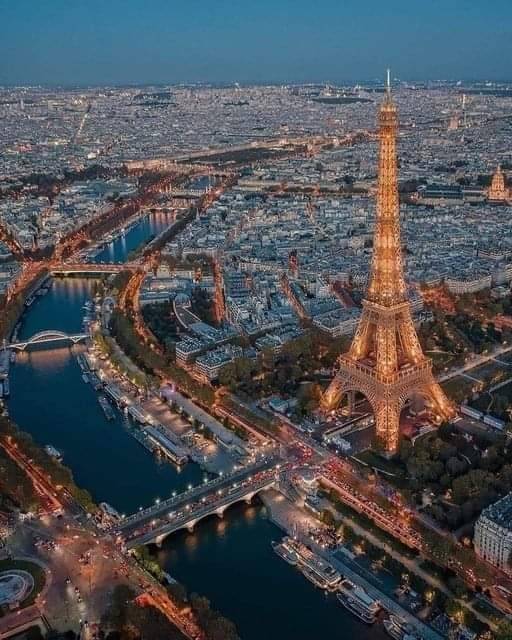
P a r i s
#paris#alexandre gustave eiffel#gustave eiffel#tour eiffel#eiffel tower#torre eiffel#la seine#riviere seine#seine river#rio sena#france#francia#europe#europa
132 notes
·
View notes
Text
Γουστάβος Άιφελ – Ο άνθρωπος του Πύργου που «πήρε το σχήμα του από τον ίδιο τον άνεμο»
Ο Γουστάβος Άιφελ (Alexandre Gustave Eiffel, πραγματικό επώνυμο: Bönickhausen, 15 Δεκεμβρίου 1832 – 27 Δεκεμβρίου 1923), ήταν Γάλλος μηχανικός, αρχιτέκτονας και μασόνος. Γεννήθηκε στη Ντιζόν και έγινε γνωστός χτίζοντας γέφυρες και φυσικά τον Πύργο σήμα-κατατεθέν του Παρισιού. Ο Άιφελ ήταν διάσημος από τα μεγαλοφυή του σχέδια και την άριστη τεχνογνωσία του στις σιδηροκατασκευές. Φωτογραφία από:…
View On WordPress
0 notes
Text
Γουστάβος Άιφελ – Ο άνθρωπος του Πύργου που «πήρε το σχήμα του από τον ίδιο τον άνεμο»
Ο Γουστάβος Άιφελ (Alexandre Gustave Eiffel, πραγματικό επώνυμο: Bönickhausen, 15 Δεκεμβρίου 1832 – 27 Δεκεμβρίου 1923), ήταν Γάλλος μηχανικός, αρχιτέκτονας και μασόνος. Γεννήθηκε στη Ντιζόν και έγινε γνωστός χτίζοντας γέφυρες και φυσικά τον Πύργο σήμα-κατατεθέν του Παρισιού. Ο Άιφελ ήταν διάσημος από τα μεγαλοφυή του σχέδια και την άριστη τεχνογνωσία του στις σιδηροκατασκευές. Φωτογραφία από:…
View On WordPress
0 notes
Text
Γουστάβος Άιφελ – Ο άνθρωπος του Πύργου που «πήρε το σχήμα του από τον ίδιο τον άνεμο»
Ο Γουστάβος Άιφελ (Alexandre Gustave Eiffel, πραγματικό επώνυμο: Bönickhausen, 15 Δεκεμβρίου 1832 – 27 Δεκεμβρίου 1923), ήταν Γάλλος μηχανικός, αρχιτέκτονας και μασόνος. Γεννήθηκε στη Ντιζόν και έγινε γνωστός χτίζοντας γέφυρες και φυσικά τον Πύργο σήμα-κατατεθέν του Παρισιού. Ο Άιφελ ήταν διάσημος από τα μεγαλοφυή του σχέδια και την άριστη τεχνογνωσία του στις σιδηροκατασκευές. Φωτογραφία από:…
View On WordPress
0 notes
Text





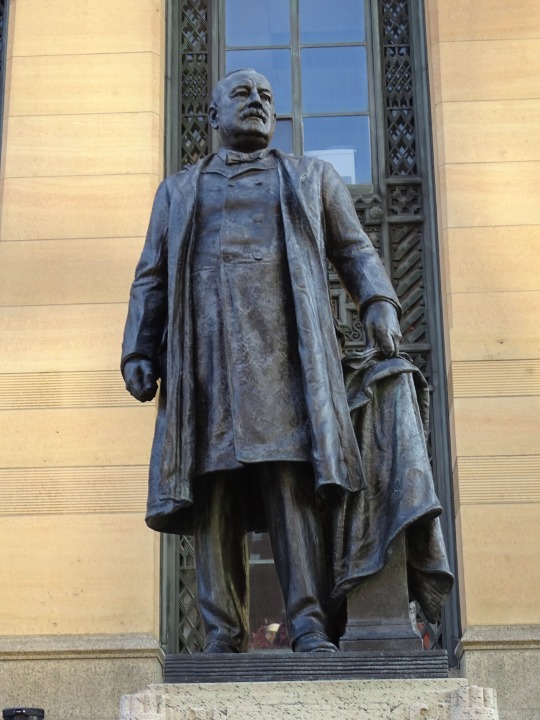

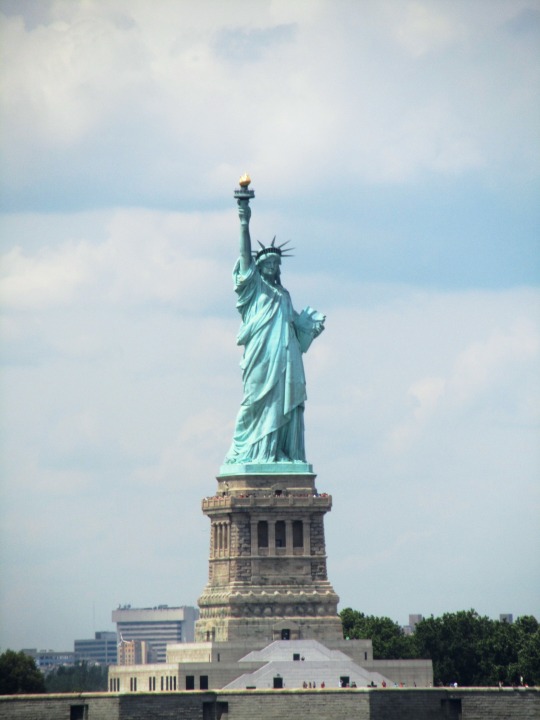

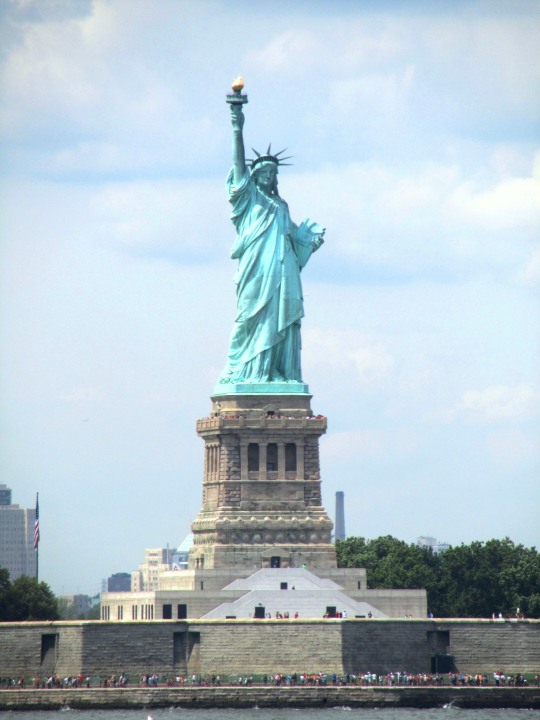

In New York Harbor, President Grover Cleveland dedicated the Statue of Liberty on October 28, 1886.
Statue of Liberty Dedication Day
Statue of Liberty Dedication Day celebrates the Statue of Liberty, and commemorates the day on which it was dedicated in 1886. The idea for the statue was proposed by French historian Edouard de Laboulaye in 1865. France decided to build and give the statue to the United States to commemorate the centennial of the signing of the Declaration of Independence, the alliance between the two countries during the Revolutionary War, and the friendship that continued afterwards. An agreement was made that the statue would be paid for by the people of France, and the pedestal on which it would stand would be paid for by Americans. The project was delayed because of lack of funds from both countries, especially the United States, but the money was eventually raised. French artist Frederic-Auguste Bartholdi designed the statue, and its support system was engineered by Eugene-Emmanuel Viollet-le-Duc and Alexandre-Gustave Eiffel—who shortly afterwards became famous for his work on the Eiffel Tower.
In June 1885 the statue arrived in New York City in 214 packing crates, and was reconstructed on Bedloe’s Island—which was renamed Liberty Island in 1956. On October 28, 1886, the Statue of Liberty was dedicated. A red barge transported to the island those who wanted to see the event. President Grover Cleveland officiated, and a speech was given by Ferdinand de Lesseps, who was a French diplomat, and head of the Franco-American Union, a group that had been created in 1875 to facilitate the completion of the project. There was music and a gun salvo, and Bartholdi, the mastermind of the statue, was perched in the statue’s torch, and pulled a rope that removed the French flag from in front of Lady Liberty’s face, revealing it to the crowd. That evening the torch was lit for the first time.
The statue stands 151 feet tall, and is made of a copper sheeting covering an iron framework. Its pedestal is 154 feet in height, and is made of granite. Besides holding a torch, Lady Liberty—who was based off of Libertas, the Greek god of freedom—holds a tablet in which the date July 4, 1776, is inscribed. The statue became an important symbol for immigrants, especially after nearby Ellis Island began processing them in 1892. It was the first thing that they saw while entering New York Harbor, and many wrote home to their relatives in their home countries about it. Emma Lazarus’ poem, “The New Colossus”, was eventually added to the pedestal, further cementing the relationship between immigrants and the statue. It became a U.S. National Monument in 1924, and the National Park Service now oversees the whole island. Today the statue stands as a universal symbol of freedom and liberty.
How to Observe
The best way to celebrate the day, is to visit the Statue of Liberty, or plan a trip to do so. A boat can be taken to Liberty Island, and the pedestal and crown of the statue can be explored.
Source
#President Grover Cleveland by Bryant Baker#President Grover Cleveland#USA#dedicated#Statue of Liberty#28 October 1886#anniversary#US history#Gustave Eiffel#Frédéric Auguste Bartholdi#sculpture#Buffalo City Hall#Buffalo#New York City#New York#summer 2013#2018#original photography#architecture#New York Harbor#tourist attraction#landmark#Manhattan
0 notes